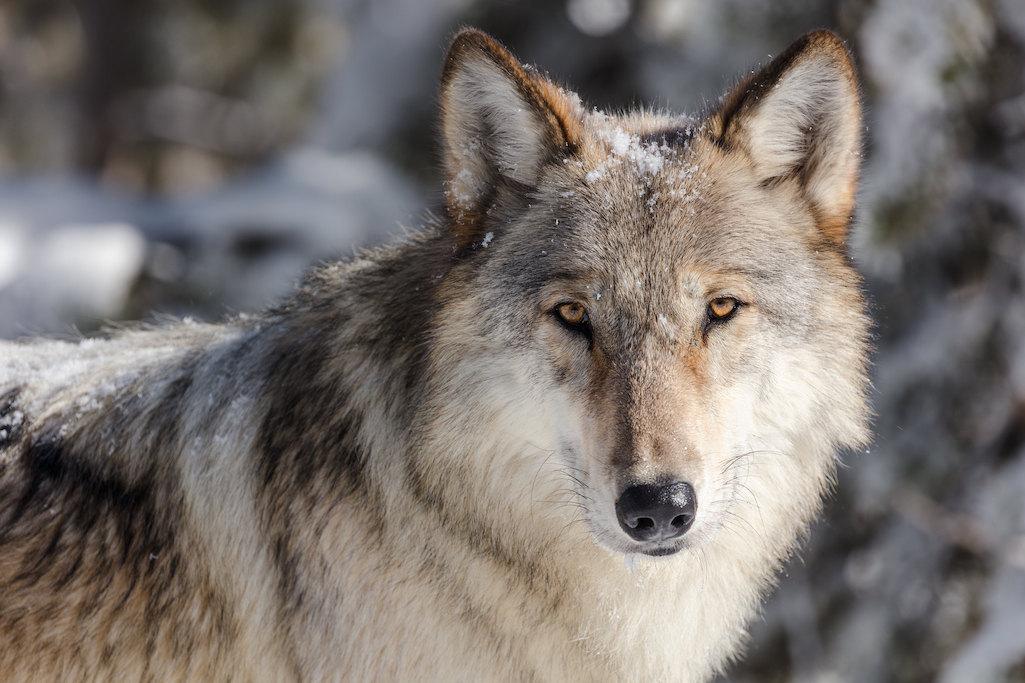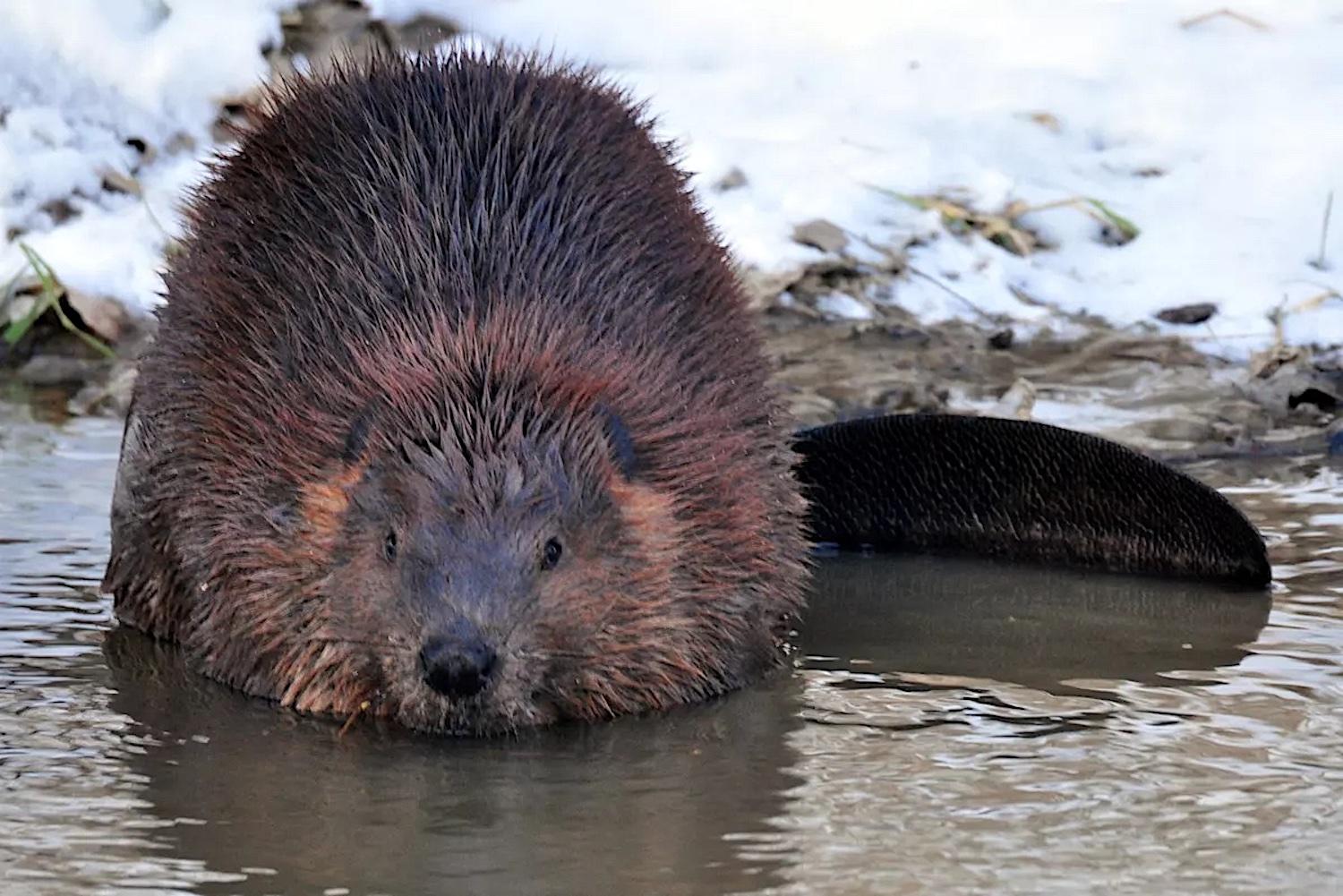
Bringing more wolves and beavers to Western landscapes would greatly help the environment, according to a panel of scientists./NPS, Jacob W. Frank
Two species that came close to being wiped off the U.S. landscape now are being looked upon as keys to "rewilding" the American West, a movement seen as building on the Biden's administration determination to see at least 30 percent of the nation's lands and waters preserved for nature by 2030.
Wolves, long viewed negatively as voracious predators that sometimes kill for fun and need to be eradicated, and beavers, whose pelts fueled the 19th century hat industry, came close to being extirpated from the United States. Now, though, a group of scientists believes the two species are key to bringing nature back into balance on federal lands.
"Rewilding aims to re-establish vital ecological processes. These typically involve key native animals, restoring key species, and they typically involve restoring predators," explained Professor William Ripple, an Oregon State University ecologist and the lead author of Rewilding The American West. "The rewilding concept is more commonly known in Europe than in the United States, where they have conservation programs that have brought back thousands of wolves and bears and lynx."
During a wide-ranging conversation on the National Parks Traveler's weekly podcast with co-authors Michael Phillips from the Turner Endangered Species Fund and Elaine Leslie, who was the National Park Service’s chief for biological resources, Ripple said wolves and beavers should lead the restoration effort because the canids can control burgeoning populations of deer and elk while beavers can help restore landscapes by building dams that create watery oases.
"Wolves can offer significant ecological benefits by helping control, naturally, over-abundant prey such as deer and elk that browse down important plant species such as aspen and willow," Ripple said. "Another point that I want to make about wolves is that they can provide important carrion for a variety of scavenger species. So wolves are really very much what wildness is about, and much of the American public is really enthused about wolves, and they have this keystone effect. The beaver are also considered a keystone species, by felling trees and shrubs and constructing dams. Beaver enrich fish habitat, they can help maintain water flows during the droughts. They improve the water quality, and generally improve habitat for a lot of plant and animal species. The ponds and the wetlands constructed by beaver can serve as natural firebreaks in the case of wildfire, which seems to be more and more common these days given climate change."
The paper (attached below), which appeared last month in BIOSCI, had 20 co-authors. In addition to Ripple, the lead author, Phillips, and Leslie, input came from Daniel M. Ashe, director of the U.S. Fish and WIldlife Service from 2011-2017, and John Vucetich, a Michigan Technological University researcher who long has studied wolf-moose interactions at Isle Royale National Park, and others.
"These two specific species on the landscape scale are critically important right now when we're discussing things like where we are with climate change, biodiversity loss," Leslie said during the podcast. "And it's not just some of those iconic species that are intertwined with this rewilding effort. We need to look at invertebrates and herpatofauna, reptiles, and avafauna. I mean, you can't go through a nice wild riparian system and not notice bird habitat, and the invertebrates are critical to that. And that whole intertwining of healthy waters, healthy systems, healthy ecosystems, is critically important to a myriad of species. So, you know, we can look at the iconic wolf and we can look at beavers and moose and habitat, etc., but we need to scale down sometimes and look at the microfauna level as well and the importance of the restoration of the species in this habitat, in really bringing back biodiversity and preventing further loss."
While beavers in recent years have been seen as being beneficial to many landscapes and are being encouraged by the National Park Service to help restore landscapes in places such as Rocky Mountain National Park and Bandelier National Monument, many politicians in the West take a dim view on increasing wolf numbers and would be hard to convince that it makes sense to release them in places such as Utah's Wasatch-Cache National Forest, the Sierra National Forest in California, or Olympic National Park and Olympic National Forest in Washington, to cite three of 11 public lands areas in the West with at least 1,930 square miles (5,000 square kilometers) that the study identifies for rewilding with wolves and beavers.

Bringing beavers back onto Western landscapes would help restore areas overgrazed by livestock or damaged by fire/NPS file
Phillips, however, maintained that expanding wolf habitat might not be as controversial as it might seem on its face. Colorado voters in 2020 voted to have the state restore wolf packs to that state.
"Gray wolves are relatively easy to work with. They're wonderful ecological generalists," he said. "Gray wolves can make a bad restoration plan look good. All they need, all they need really, is access to something bigger than themselves to live on. Gray wolves are hardwired to prey on large-hoofed mammals, and they need to be left alone. The only thing that's ever given gray wolves the blues, the only thing that's ever threatened the gray wolf anywhere is human-caused mortality.
"They are not hard to live with," Phillips continued. "They do not represent a threat to human safety. They do not represent a threat to the livestock industry and they do not represent a threat to the big game hunting industry. What gets in the way of wolf recovery, and we've whittled away at this for decades now, is the myth of the wolf. This myth that would have you believe that gray wolves can exercise their predatory will on a whim. Nothing could be further from the truth. But unfortunately, the myth on the gray wolf is as wrong as it is strong, and it persists through present. And while we make two steps forward, we always have one step back. We've had great success restoring gray wolves in the northern Rocky Mountains. But now in the presence of state laws, there's a concerted effort to liberalize recreational killing, to effect a significant reduction in wolf numbers for no justifiable reason."
Phillips, who played a role in the Colorado wolf initiative, is confident the general public would support the rewilding proposal. "The problem isn't with the American public, it's with elected officials and decision-makers that inevitably bring their own ideologies to the decision-making table," he said.
Aiding the proposal when it comes to wolves is that in much of the West the species is protected by the Endangered Species Act. So if wolves thrive in Colorado and some make their way west into Utah's national forests, the act would, in theory, protect them from being hunted or killed.
"In the absence of needless killing, gray wolves will find the nooks and crannies where they can flourish," said Phillips.
Along with finding places where the two species can flourish, the scientists pointed to the need to established wildlife corridors linking the 11 areas proposed for restoration.
"These animals need the ability to move and to move safely. And this country, we have no federally designated wildlife corridors," said Leslie. "We have Path of the Pronghorn, but that's not a federally designated corridor system. We need a federally protected corridor system. We need landscape corridors, we need steppingstone corridors, we need buffer zones, linear corridors. We need a way for these animals to move in a protected fashion. And right now, it doesn't matter if it's the predator or the prey, they don't have that ability."
Another potentially controversial aspect of the proposal is the scientists' call for removing livestock from 29 percent of the grazing allotments on federal lands in the West. The proposal calls for an "economically and socially just federal compensation program for those who relinquish their government grazing permits."
"When you look at our work closely enough, there's one thing above all else that would advance rewilding, beyond tolerance," said Phillips. "And I don't think it's too much for folks to value life and not kill things needlessly. But beyond that, the one thing that this proposal needs to become alive and effective, and that's removing livestock from grazing allotments. About 29 percent of the grazing allotments of the Western U.S. When you look at the science, we understand livestock are a big burden on native species and native landscapes."
Once the livestock are removed, wolves would be returned to bring balance to ungulate populations so as to allow riparian areas to rebound and provide the willows, ash, shrubs, and other vegetation beavers need to build their dams.
"I know the world of wolf restoration very well. There's really not any other place where you need to advance the wolf's presence through reintroductions," said Phillips. "There will have to be reintroductions of beavers, but that should be met with little controversy. You have to get lawmakers to embrace the notion of tolerance and the avoidance of needless killing. At the end of the day, if that's all we were able to bring about, it would forment massive changes in the health and integrity of these Western landscapes. It's not complicated if you just not kill things needlessly. And if we put beavers back and celebrate their importance, as ecological engineers, the vision of the Western rewilding network would become real."
Doing so, said Ripple, would greatly benefit the environment.
"If we can make our our environment more pristine, and have our plant species flourishing better, that gives us more resilience in climate change," he said.
Traveler postscript: Catch the entire conversation on the National Parks Traveler's Episode 186: Rewilding the West



Comments
"wildlife corridors" is another word for propterty that cannot be developed. In any way. In a country that is overwhelmed with people I dont see that as a good idea. And where will we replace the food that is going to be lost if we do not allow grazing on federal lands? Has anyone read up on what happened in communist China and place like Ukraine under stalin when farmers did similar things?
And who will this benefit? The average person- who will pay more for food, for energy, for housing, while paying increased taxes to support all of this, or the big guy who profits off of higher food costs, profits off of reduced housing availablity, profits off of a reduced supply chain for food and shelter.
This is not a plan for the people and I dont see how it is a plan for our parks either